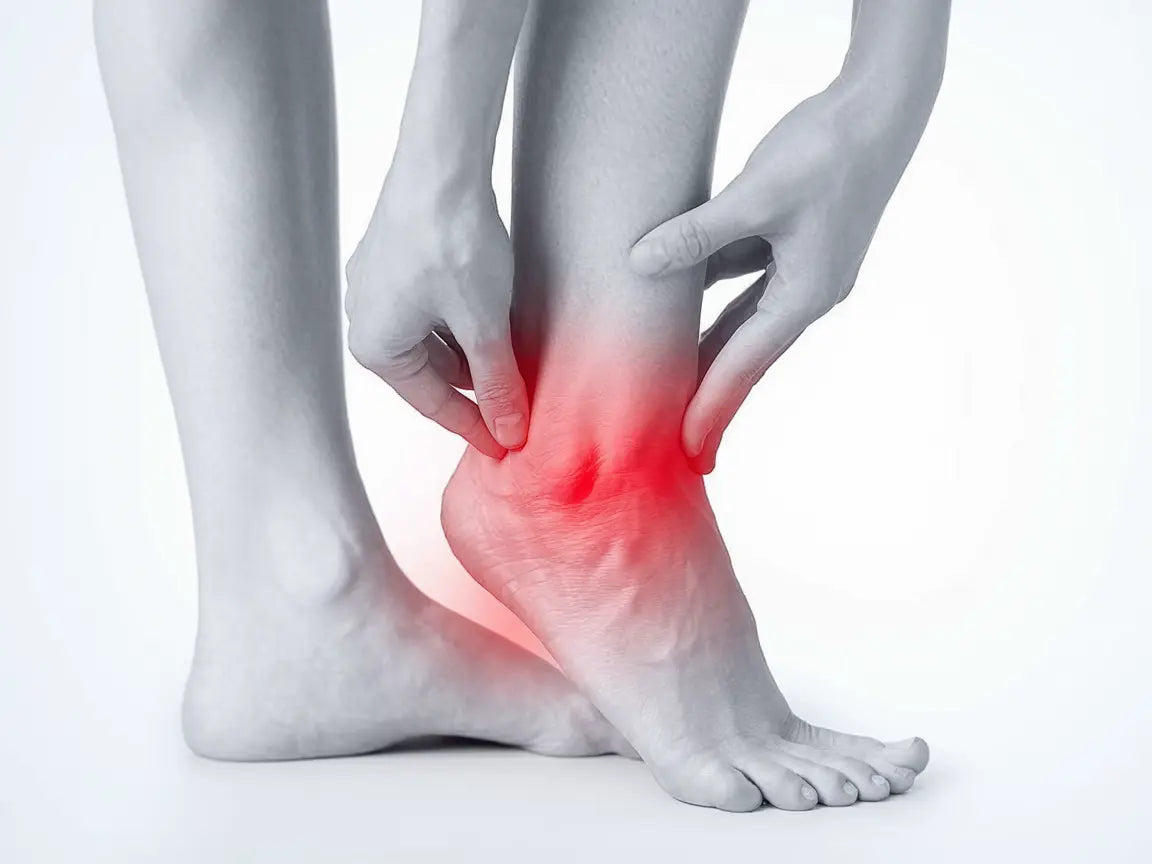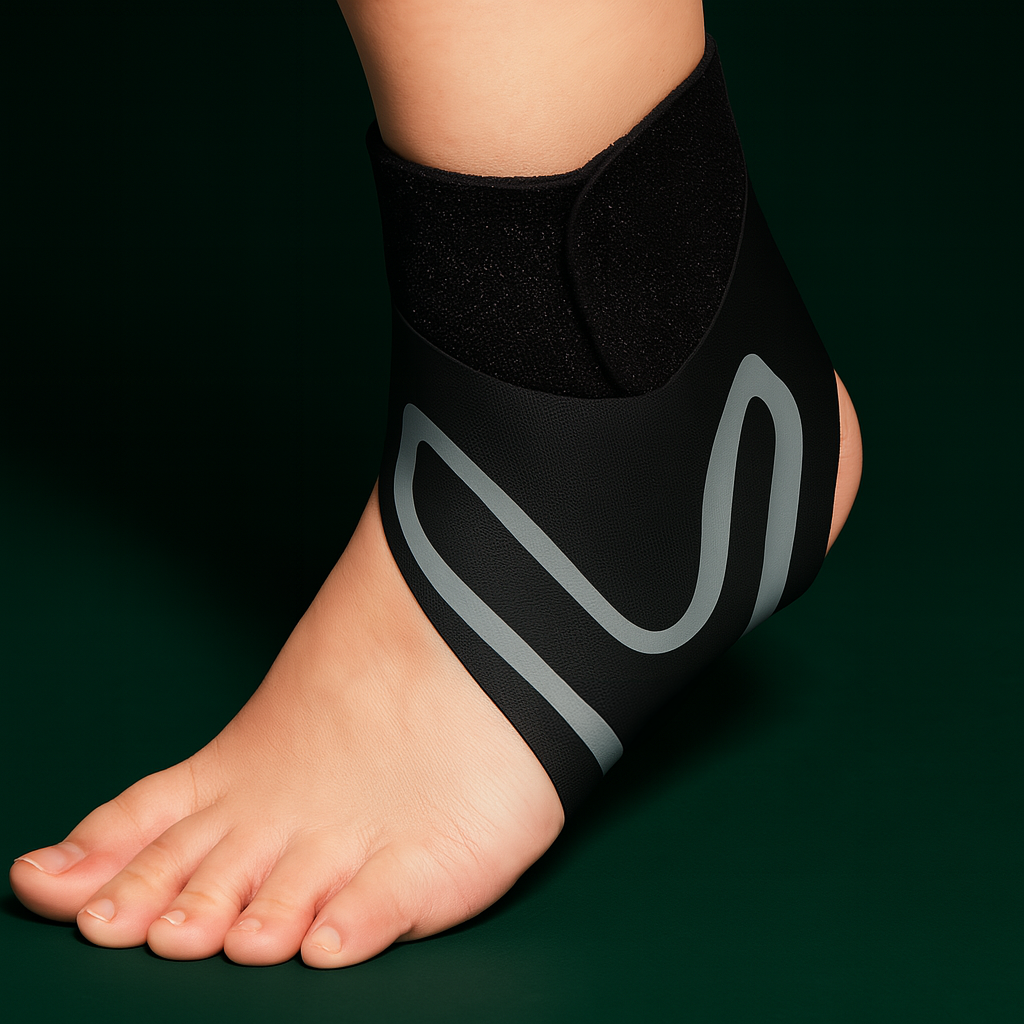Bump on the Foot: Causes, Symptoms, and Treatment

A bunion on the foot can be a sign of various conditions that affect the structure and function of the foot. This article reviews the most common causes, symptoms, and treatment options for bunions on the foot.
What is a lump on the foot?
A bunion is a bulge or swelling that can occur on different parts of the foot, usually on the inside or outside. A hard bunion on the foot can occur in many different places and can be painful when placed on weight. Depending on the location, bunions can cause anything from mild discomfort to significant pain that affects walking. Bunions can be caused by, among other things, hallux valgus , bunions, or other conditions.
Common causes of bumps on the foot:
Hallux valgus (bunion on the inside of the foot, at the big toe)
- Tailor's knot (lump on the outside of the foot)
- Ganglion (fluid-filled cyst)
- Exostoses (bony growths)
A bunion on the inside of the foot is often due to hallux valgus, while a bunion on the outside of the foot may be a tailor's bunion. Bunions on the top of the foot are often the result of repeated friction from shoes or a local inflammation. In some cases, overuse of the foot can also contribute to bunions, especially on the underside.
Lump on the outside of the foot
A bump on the outside of the foot is often a tailor's bunion, which occurs at the base of the little toe. This type of bump can become red, swollen, and painful, especially when wearing tight shoes. Recognizing the symptoms early is important to prevent the condition from getting worse.
Symptoms of a lump on the foot
Common symptoms include:
- Visible bulge on the foot
- Pain and tenderness around the lump
- Swelling and redness
- Limited mobility in nearby joints
- Difficulty finding comfortable shoes
When a bunion on the foot hurts, it is often due to pressure from shoes or the strain of walking. A swollen bunion on the outside of the foot can be painful, especially when wearing tight shoes. In some cases, even a bunion that normally doesn’t hurt can start to cause discomfort after standing or walking for a long time. A bunion near the big toe or on the plantar (bottom) side of the foot can be especially painful because these areas are under a lot of stress when walking – something that is also similar topain under the foot .
Diagnosis and treatment of a bunion on the foot
A bunion on the foot can occur for a variety of reasons — from inflammation and overuse to improper footwear or congenital abnormalities. In order to choose the right treatment, it is important to get a proper diagnosis. A healthcare provider can determine whether the bunion is benign, inflamed, or the result of pressure and irritation.
Treatment is tailored to the cause and aims to reduce pain, inflammation and pressure on the foot.
Physical examination
During a basic examination, the use of wider shoes is often recommended to reduce pressure on the bunion.
The Foot Support 2.0 provides stable support and relieves the arch of the foot, which reduces the strain on sensitive areas.
X-ray
If the lump causes long-term pain, an X-ray may be done to rule out bone spurs or osteoarthritis.
Individually tailored inserts can then be used to distribute pressure evenly across the foot and reduce irritation.
Ultrasound if necessary
Ultrasound is often used when inflammation or fluid accumulation is suspected.
Treatment may then consist of anti-inflammatory medications and relieving foot supports.
The Foot Support 2.0 reduces pressure on sore spots and promotes circulation.
MRI in complex cases
In more complex cases, where the pain is not relieved by conservative methods, MRI may be needed to detect deeper tissue involvement.
In severe cases, surgery may be considered to improve the function and position of the foot.
Important to consider
If you have a tender bump on your foot that won't go away, you should seek medical attention to determine the cause. Many cases can be relieved with rest, wider shoes, and shock-absorbing inserts.
For heel spurs caused by overuse, special heel inserts can reduce pressure and provide long-term pain relief.

How FotSupporten 2.0 can help with bunions on the foot
The Foot Support 2.0 from Komforten offers several benefits for people with bunions on their feet:
- Provides support and relief to the arch of the foot
- Distributes pressure evenly across the entire foot
- Reduces strain on sore spots and bumps
- Improves foot position and function
- Can be used in different types of shoes for consistent support
For people with bunions on the outside of the foot or bunions on the inside of the foot, the FootSupport 2.0 can help by redistributing pressure so that less strain is placed on the painful bunion. This can be particularly effective in reducing pain when walking and standing. For bunions that have arisen due to foot misalignment, the support can also help improve the position of the foot over time. It also works for other conditions where pressure in the foot causes pain, such as Morton's neuroma.
Conclusion
Bunions can be painful and limiting, but with proper diagnosis and treatment, many people can effectively manage their symptoms. Using supportive devices such as the FootSupport 2.0, along with appropriate footwear and possible medical treatment, can help reduce discomfort and improve foot function. It is important to consult a doctor or podiatrist for a proper diagnosis and individualized treatment plan. Related conditions such as gout in the foot may also need to be ruled out if symptoms persist.
Frequently Asked Questions (FAQ)
Can bumps on the foot go away on their own?
Some smaller bunions can reduce in size with the right treatment, but larger structural changes such as hallux valgus usually require more extensive measures.
How long should I use the FootSupport 2.0?
The FootSupport 2.0 can be used daily for continuous support. Consult a foot specialist for personalized recommendations.
Is surgery always necessary for bunions on the foot?
No, many cases can be treated conservatively with the help of inserts, appropriate shoes and lifestyle changes.
Can exercise help with foot bumps?
Yes, specific exercises can strengthen the muscles of the foot and improve its function. Consult a physiotherapist for a customized exercise program.
When should I seek medical attention for a bump on my foot?
Seek medical attention if the lump is painful, grows in size, limits your mobility, or if you experience other worrisome symptoms. Similar warning signs can also occur with a broken bone in the foot .

